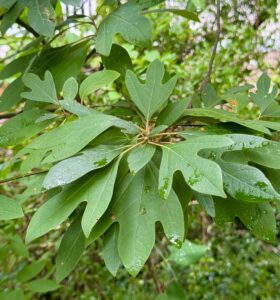
By Mary Reid Barrow
Say hello again to the Palamedes swallowtail butterfly.
The who?
Yes, the Palamedes swallowtail. Reacquaint yourself with the big beauty. It is probably the most prevalent swallowtail in Virginia Beach, yet we don’t notice it or if we do, we quickly confuse it with another swallowtail and move on.
Its name, Palamedes after a god in Greek mythology, is interesting and all that. But its moniker is not nearly as descriptive as “black swallowtail” or as bold as “tiger swallowtail.”
So, we often confuse them. The Palamedes is a deep brownish-black. Not coal black like the black swallowtail. The Palamedes also is large like the tiger swallowtail and has enough yellow spots along its wing edges that upon first glance, it could be confused with the striped tiger swallowtail.
On the other hand southeastern Virginia is not only just about the northernmost range for the Palamedes but it also is prime habitat for this butterfly, a critter of marshes and low lying forests. Its host plants are sassafras trees and red bays, trees found all over the area.
No wonder we have a lot of Palamedes here. At least I know I do.
My yard has a small grove of sassafras trees, a little tree with a story all its own in its mitten and glove-shaped leaves. I see more Palamedes than any other butterfly nectaring in my yard.

I must say that though I search the lower branches of my sassafras trees, I have never found its green caterpillar on a leaf or its green chrysalis. But I have no doubt they are there. I am convinced my trees are a Palamedes nursery which is why I have so many grownups in my yard.
Look again at the butterflies in your yard. You might have more Palamedes than you think too.